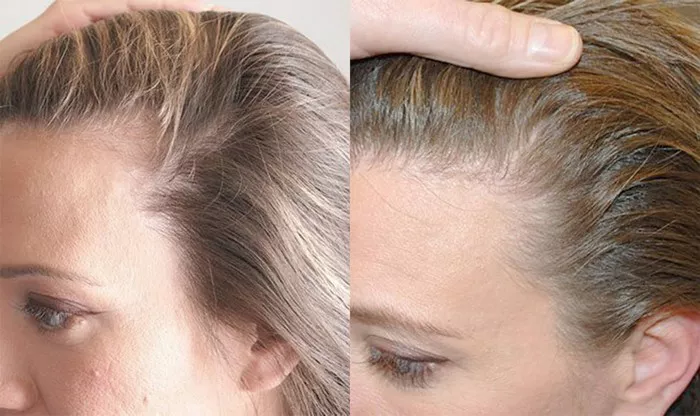For women experiencing hair loss, a hair transplant can be a life-changing solution, offering the potential for restored confidence and a fuller, more vibrant mane. However, one common question that arises is whether a female hair transplant provides a permanent solution. In this comprehensive guide, we delve into the intricacies of female hair transplants, exploring the factors that contribute to their permanence and addressing common concerns.
Understanding the Female Hair Transplant Process: A Brief Overview
Female hair transplants involve the surgical relocation of healthy hair follicles from one part of the scalp (typically the back or sides, known as the donor area) to areas with thinning or no hair (the recipient site). This process is meticulously performed to ensure the natural growth and appearance of the transplanted hair.
The two primary methods for female hair transplants are Follicular Unit Transplantation (FUT), which involves removing a strip of tissue containing hair follicles, and Follicular Unit Extraction (FUE), where individual follicles are extracted one by one. Both methods aim to provide a permanent solution to hair loss by relocating hair follicles that are genetically resistant to the hormone dihydrotestosterone (DHT), the primary culprit in female pattern baldness.
See Also: [Revealed!] The Importance of Exercise After a Hair Transplant
The Genetic Factor: Foundation of Permanence
The permanence of a female hair transplant is deeply tied to the genetic characteristics of the transplanted hair follicles. Follicles taken from the donor area are resistant to the hormonal influences that typically lead to hair loss. This genetic resilience ensures that, once transplanted, these follicles will continue to grow and thrive in their new location, providing a long-lasting solution to hair thinning.
The permanence is not solely dependent on the method of transplantation (FUT or FUE) but rather on the inherent nature of the hair follicles being moved. Therefore, the success and longevity of the transplant are closely linked to the individual’s unique genetic makeup.
The Growth Cycle: A Continuous Process
To appreciate the permanence of a female hair transplant, it’s essential to understand the natural hair growth cycle. Hair follicles go through three main phases: the anagen phase (active growth), the catagen phase (transition), and the telogen phase (resting). The transplanted follicles undergo the same cycle, with the majority of the time spent in the anagen phase, producing actively growing hair.
The resistance of genetically resilient hair follicles to DHT ensures that they maintain their growth cycles, contributing to the enduring nature of the transplanted hair. As long as the donor hair is healthy and thriving, the results of the female hair transplant can be expected to be permanent.
Post-Transplant Care: Nurturing Longevity
While the transplanted hair follicles are inherently resistant to DHT, ensuring the longevity of the results requires attentive post-transplant care. Following the surgeon’s instructions, which often include guidelines on washing, avoiding certain activities, and taking prescribed medications, is crucial for optimal healing and long-term success.
Protecting the scalp from excessive sun exposure, avoiding harsh chemicals, and adopting a healthy lifestyle contribute to the overall well-being of the transplanted hair. A well-maintained and nourished scalp environment supports the longevity of the transplanted hair, allowing it to thrive in its new location.
Understanding Hair Loss Causes: Beyond Transplanted Follicles
While the transplanted hair follicles provide a permanent solution to hair loss in the treated areas, it’s important to note that female pattern baldness can still progress in non-transplanted areas. This is especially relevant if there is existing hair thinning or loss outside the treated regions.
To address comprehensive hair loss concerns, individuals may opt for additional transplants or explore non-surgical interventions, such as medications or laser therapy. A comprehensive approach ensures a holistic solution to ongoing or future hair loss concerns.
Individual Variability: Unique Responses to Transplants
It’s crucial to recognize that individual responses to female hair transplants can vary. Factors such as overall health, adherence to post-transplant care instructions, and genetic predispositions can influence the outcomes.
While the majority of women experience successful and lasting results from hair transplants, some individuals may require touch-up procedures or additional interventions over time. A candid discussion with the transplant surgeon about expectations and potential outcomes helps manage realistic expectations and ensures the best possible results.
Conclusion: Confidence in Permanence
In conclusion, a female hair transplant offers a permanent solution to hair loss by utilizing genetically resilient hair follicles that resist the effects of DHT. The success and longevity of the results are deeply rooted in the inherent characteristics of the transplanted follicles and their ability to maintain continuous growth cycles.
Adherence to post-transplant care instructions, ongoing self-care practices, and a comprehensive understanding of individual variability contribute to the confidence in the permanence of female hair transplants. For those seeking a transformative and enduring solution to hair thinning, a well-executed and meticulously planned hair transplant can provide a lasting boost to confidence and well-being.


